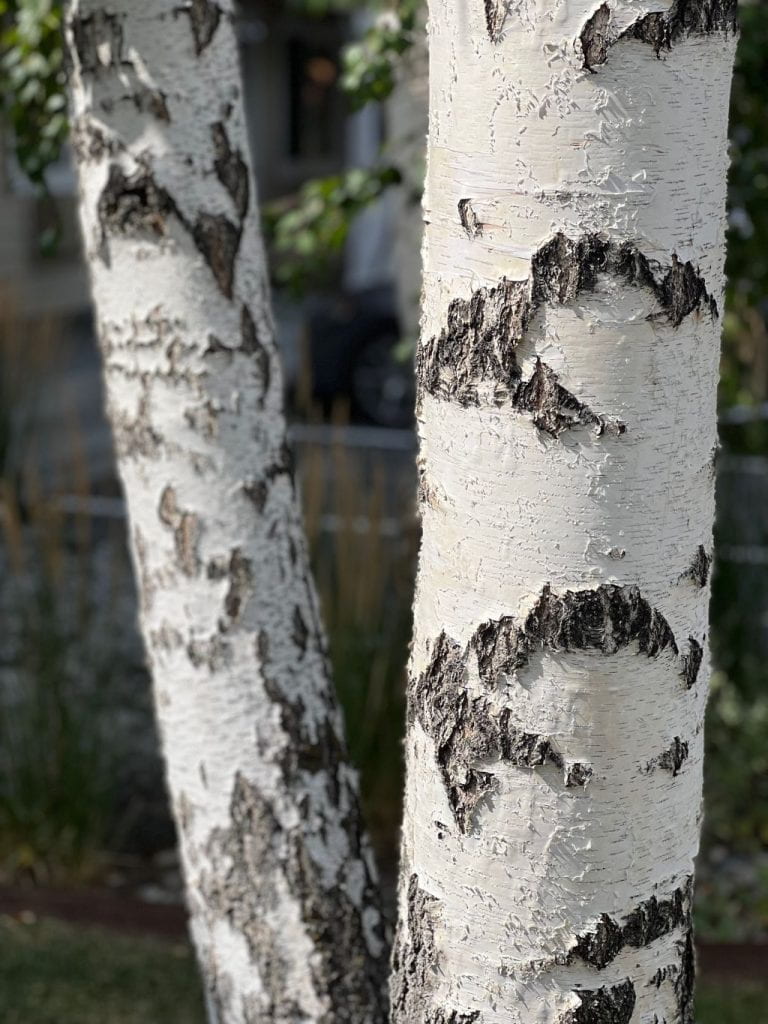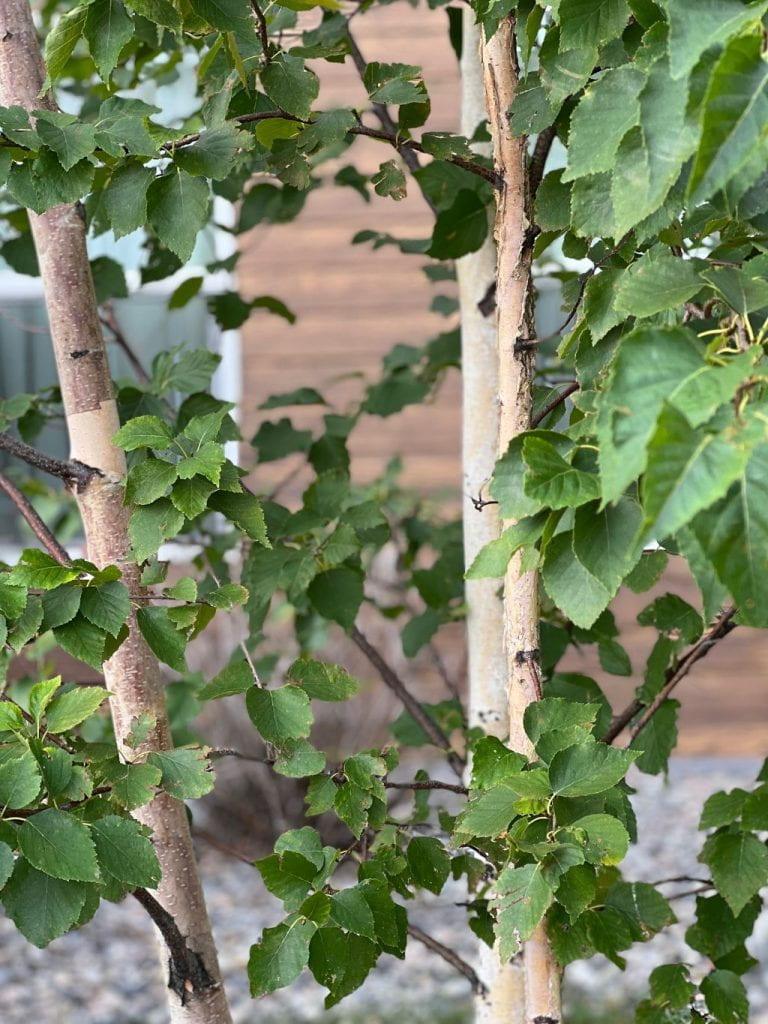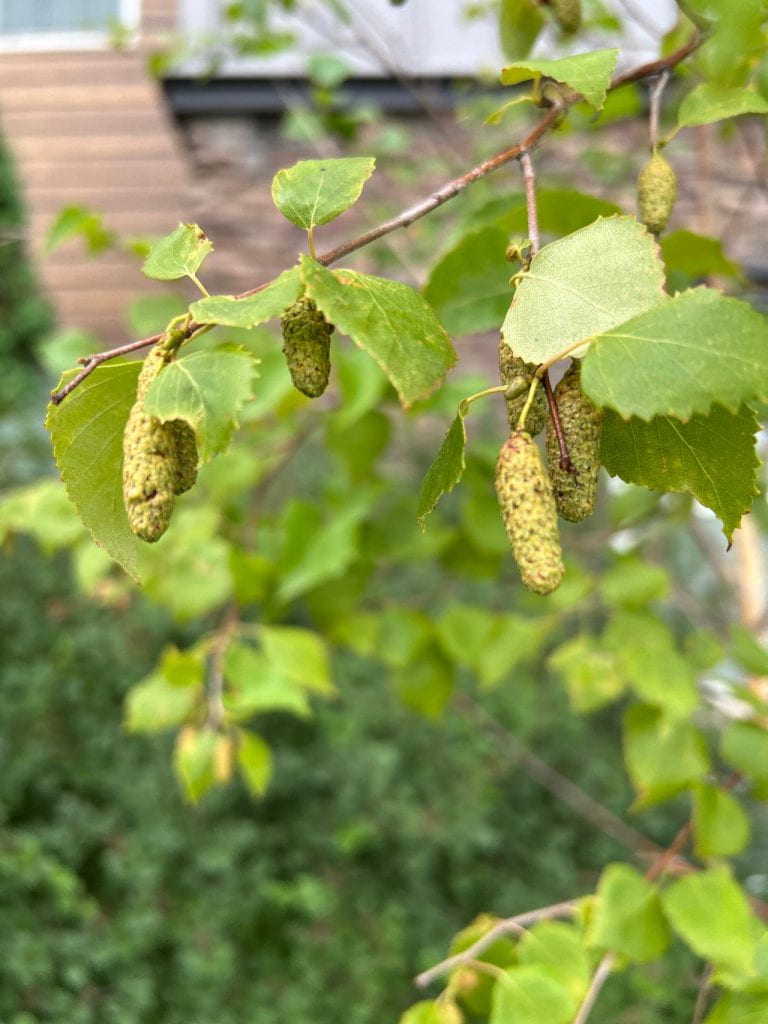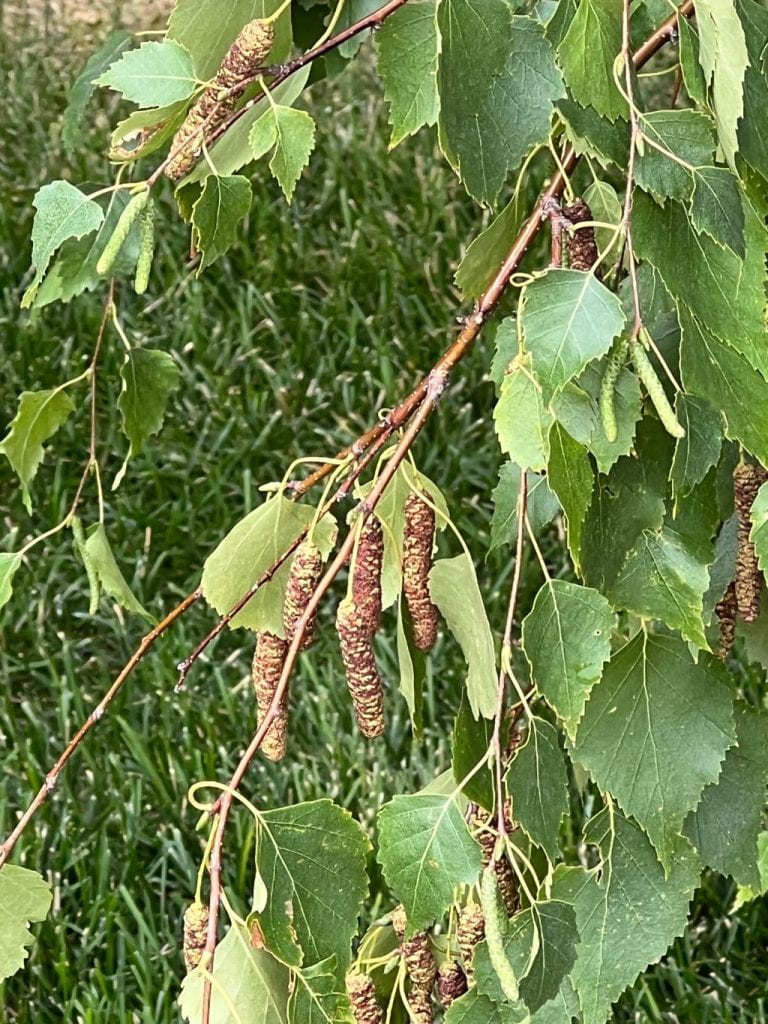Birch Trees
I grew up in New York and loved the white (paper) birch trees. I saw them again on a recent trip to Montana. Although there are 60 species of birch trees, paper birch trees, deciduous hardwoods, are easily identified by the peeling white bark. Brainstorm why the trunk may have black markings with your children or students. These black streaks are lenticels and help gases move between the air and tree. Birch trees grow quickly but are short-lived. They often have multiple trunks and prefer moist habitats. Native people used sheets of bark to cover canoes and wigwams.
Leaves have double toothed margins and turn yellow each autumn.
The small dry fruit grow in clusters on drooping catkins that turn brown as they mature.
There are simple ways for students to create birch trees, like the ones below made by Mrs. Lilge’s PreK class. Place painter’s tape on your paper to form the outline of the birch trees. Press the edges down well. Older students may want to place some trees in the foreground and others in the background after drawing the horizon. Design trees of various widths by overlapping the tape. Remove the painter’s tape after blending paint across the paper and over the tape to create a sunset. Add the lenticels to complete the trees with a black marker or crayon. Note: Blend paint for the sunset with three colors, such as orange, yellow, and red, or blue, purple, and red.




